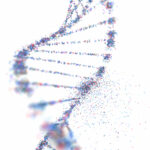Glioblastoma is a brain cancer that has eluded scientists for years. Even patients diagnosed and treated with advanced therapies do not survive more than two years after diagnosis and treatment. As recently published in Science Daily, current immunotherapies have been unsuccessful, largely because glioblastoma cells lack the natural targets that immune systems seek and attack.
Washington University scientists have created a process that forces glioblastomas cells to become partially visible targets and therefore susceptible to destruction by immunotherapies. The new process combines two drugs that had been previously approved by the FDA to treat other cancers. That study can be found in the Nature Genetics journal online here.
The distinguished Professor Ting Wang, PhD, head of the Washington University genetics department, explained that in instances where a patient’s tumors lack immunotherapy targets the team found ways to induce generation among tumors.
The Process Inducing generation in tumors is accomplished by stimuli that triggers growth of cancer cells within the tumor. The tumors expand during cell division.
Professor Wang simplified the description by explaining that for patients with tumors which do not have a target, now there is a way to create a target. It is simply a new way to design precision and targeted cancer therapies. The next step would be moving
toward clinical trials combining the new strategy with immunotherapy to treat patients who have cancers that are resistant to treatment. Professor Wang’s team plans to utilize transposable elements that cause tumors to produce unusual proteins on the glioblastoma cells which currently lack these proteins.
About Transposable Elements
The drugs are decitabine, approved for the treatment of myelodysplastic syndrome and Panobinostat, which is approved to treat multiple myeloma. The tightly packed DNA molecules unfurled when treated with the two therapy drugs triggering the
transposable elements to start producing the unique proteins that have the potential to target cancer cells.
Before Human Trials
A challenge facing the researchers involves finding ways to control the epigenetic therapy and isolating the tumor cells so they alone will produce neoantigens.
A note of caution was offered by the researchers wherein targets were also produced by normal cells after exposure to the two drugs. The normal cells may not have produced the same number of cells as glioblastoma cells, but professors Kim and Wang noted the risk of side effects when normal cells also create targets.
CRISPR Editing
Professor Kim and Wang are considering the use of CRISPR editing technology to induce the same neoantigens that are present in the human population. This strategy would produce the same targets that would respond to immunotherapy while the healthy cells would be spared. It also creates many ways to approach the targets including (but not limited to): vaccines, engineered T cells, and checkpoint inhibitors.
In conclusion, Professor Kim spoke of immunotherapy’s revolutionizing treatment for certain cancers. He again explained how resistant glioblastoma is to current therapeutic strategies. However, the professor is optimistic that the current combination under consideration will make a transformative change in glioblastoma treatment.
Editor’s Note: Get Involved
Cancer doesn’t discriminate. WHATNEXT and its partners are interested in amplifying the voices of those from all identities and backgrounds. If you have a cancer journey to share, reach out here to learn more about how your voice can help spread awareness and inspire individuals from all walks of life.
brain cancer brain tumor cancer cancer treatment glioblastoma oncology research
Last modified: January 14, 2025











